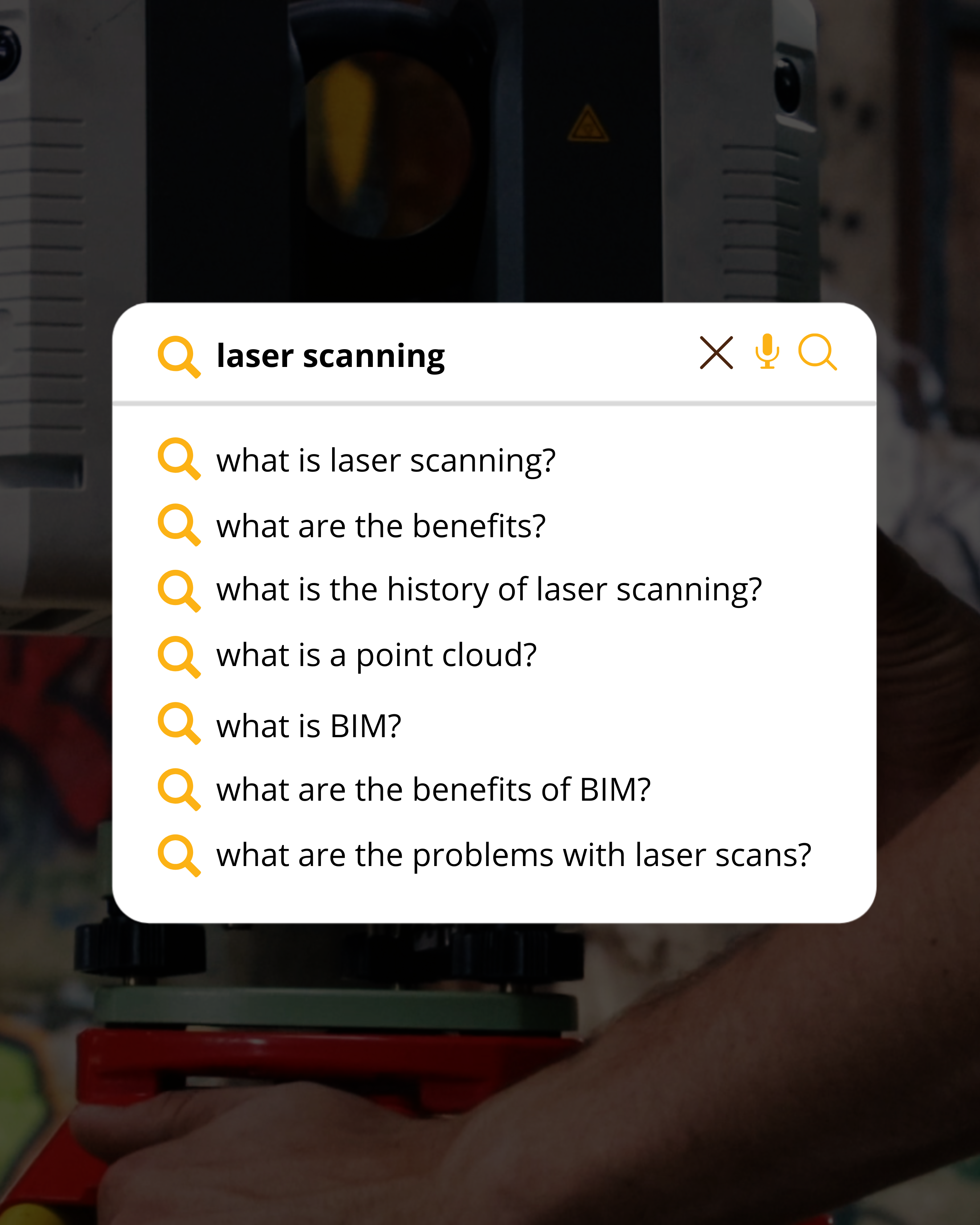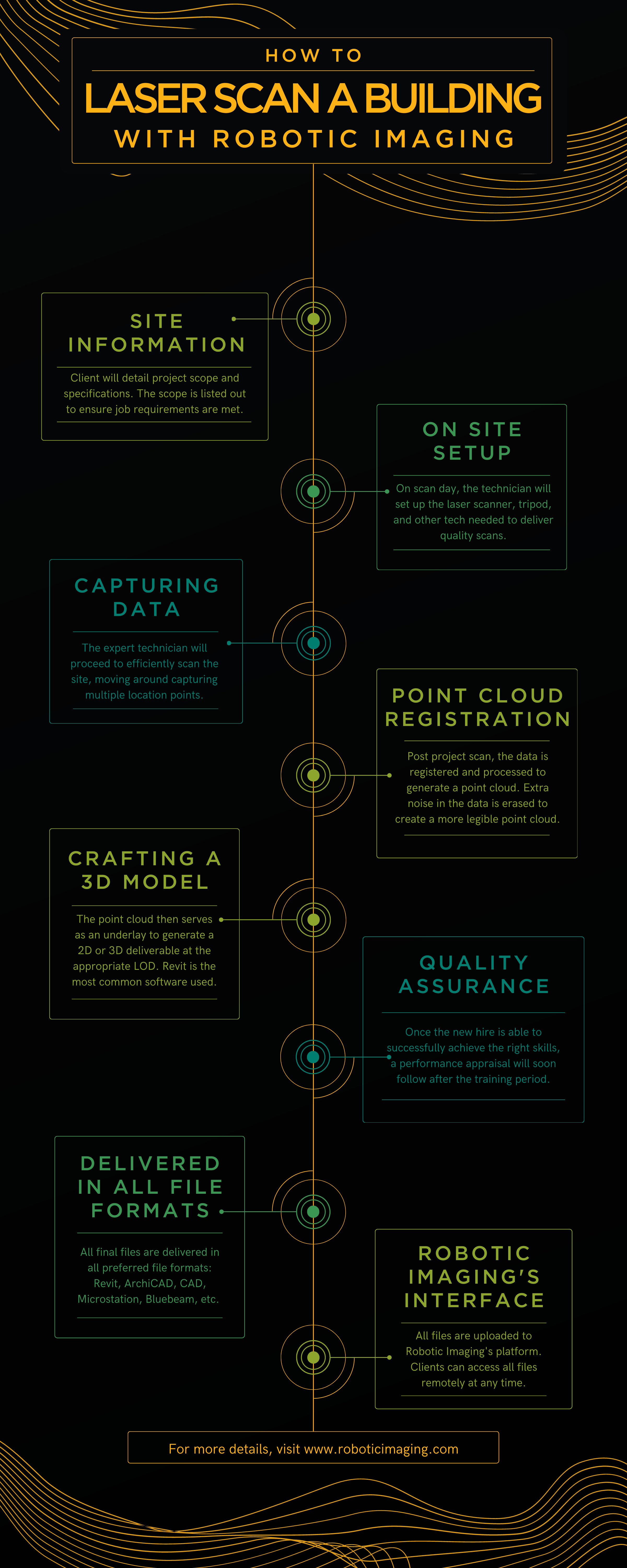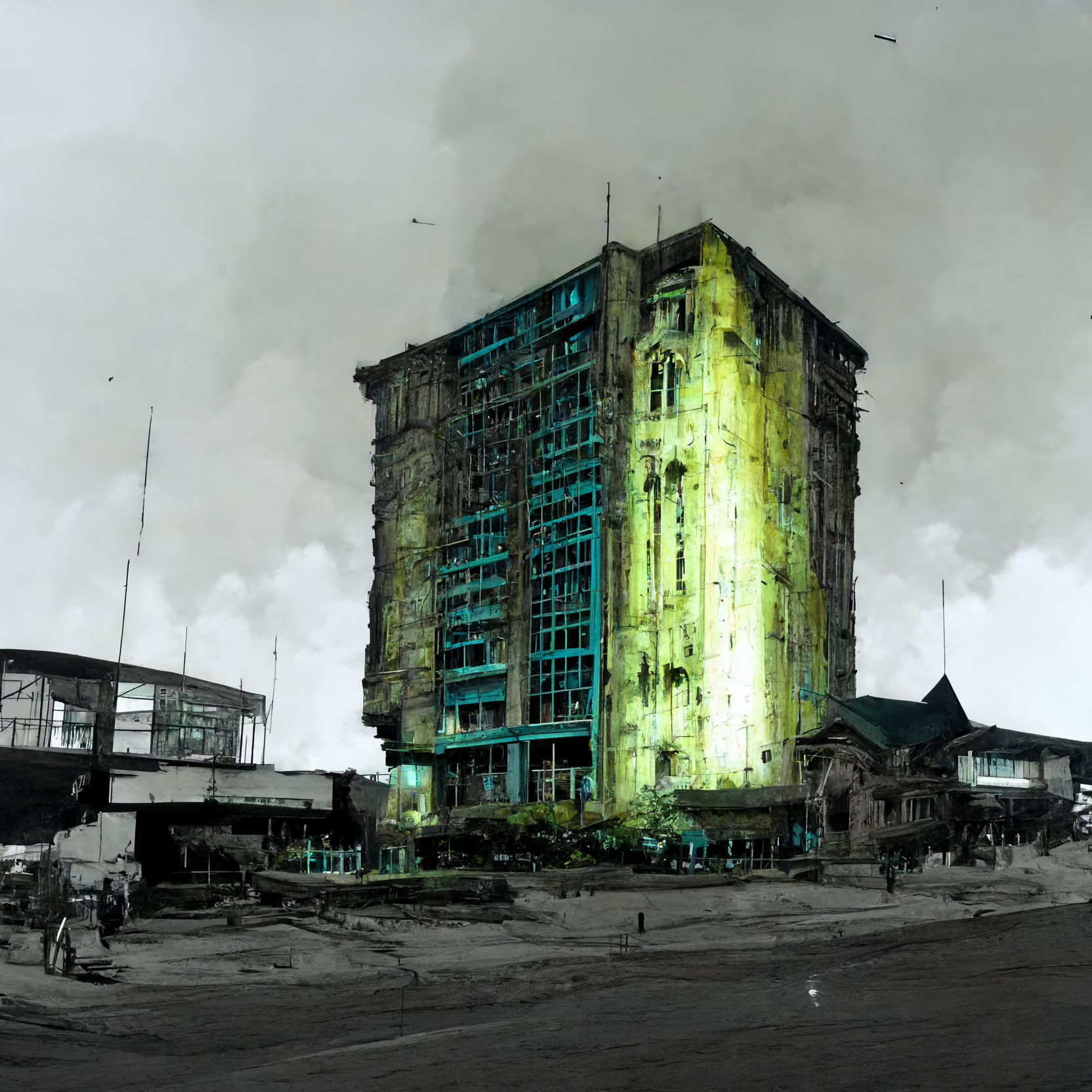
Robotic ImagingJanuary 4, 2023

Robotic Imaging believes that absolutely everyone in the AEC industry would significantly benefit from laser scanning technology. LiDAR scanning used for architectural and planning purposes has reimagined the planning, design, and construction of buildings worldwide. With this high technological advancement, anyone can capture detailed as-built buildings and site conditions, with accurate and relevant data. LiDAR technology is slowly becoming a standard practice when it comes to refitting existing structures.
What is Laser Scanning?
Laser scanning measures the deflection of laser beams, most of these beams are invisible to the human eye. It’s common practice to use LiDAR for laser scanning. LiDAR stands for light detection and ranging. Essentially, a LiDAR scanner uses light to determine the distance between two objects. Laser scanning is highly accurate as it makes the built environment using laser beams to capture measurements and even color! These points are then scrupulously plotted and stitched to produce a 3D representation of the building project. These plotted points that represent a specific space are known as point clouds. But we’ll get into point clouds later. Let’s focus on laser scanning for now.
What are the Benefits of 3D Laser Scanning?
There are several benefits to using 3D laser scanning services. Hand measuring is the traditional methodology that dominated the field, just due to lack of technology. The process can be very laborious and calculation errors are common. Also, multiple site visits are required to get dimensions, extending the process. But, let’s just list a few benefits of 3D laser scanning:
Extremely Accurate Data Collection
The Scan-to-BIM service will be extremely precise and will provide you with the correct measurements the first time. Laser scanning is highly accurate as it makes the built environment using laser beams to capture measurements and even color.
Save Significant Cost / Expenses
Because laser scanning is incredibly accurate, you are able to detect clashes and other significant building problems upon receiving the BIM file. Because every component is modeled to your preferred level of accuracy, you are able to find discrepancies quickly and early on.
Eliminate Costly Site Visits
Because you are receiving an accurate model from a service provider, like Robotic Imaging, you can eliminate the need to visit the site entirely - which can be extremely tedious and expensive. We enable designers and professionals to spend their precious time in their respective offices doing less of this busy work.
Save Time
Robotic Imaging’s quick turnaround time enables you to save time as well! What might take one person 4 site visits, 20 pages of measurements, and 2 weeks of modeling, Robotic Imaging’s professional team can do within a week’s time (depending on the project's scale and location). Let us handle the workload for you.
Improved Coordination
Because everyone on the project team is able to use a singular model from the beginning, this enables all involved parties to use the same information. This improves overall efficiency and decision making. It can also lead to improved project team relations, which will better facilitate the creation of a beautiful final project.
Reduces Manual Labor
Naturally, manual labor is prone to human error. Laser scanning can not only improve the safety of construction workers, btu even eliminate inaccuracies previously expected when using traditional documentation methods.
Suggested reading: If you want to learn more about best scanning practices, check out this article.
The History of Laser Scanners
Laser scanning originated in the 1960s. Before their invention, land surveying was completed manually. Surveyors used tools like tape measures, plumb bobs, piano wire, and laser range finders. Surveying land could take weeks or months, depending on the size and complexity of the project. Manually collecting data often lead to errors and missing data, resulting in project issues and increased costs. Once laser scanners were introduced, the equipment consisted of lights, cameras, and projectors. During this time, the data was still manually processed. The introduction of LiDAR systems in 1985 changed the way data was collected. LiDAR systems used high-quality laser beams and shadowing to generate accurate and impactful data.
What is a Point Cloud?
Point clouds are plotted data points that represent space. A single point is plotted in an X, Y, Z coordinate and will represent an underlying sampled surface. Multiple data points will collate into multiple spatial measurements and therefore can effectively represent entire interior or exterior spaces. Sometimes, additional data, like color and luminance value, can be stored in an RGB format.
Point clouds are the most accurate, pain-free method of measuring buildings and their properties. These measurements produce the most precise and detailed data in comparison to other surveying technology. Developments in technology will push point cloud scanners to improve their accuracy and capabilities within the next few years.
What is BIM?
The Scan to BIM Process has helped enhance the productivity of AEC professionals with the creation of smart 3D building models where each design element is clearly defined. The application of Scan to BIM Modeling can be seen in as-built documentation, project renovations, additions, and even facility management. The models are also valuable for comparing original building plans, topographical registration, and more.
BIM, or Building Information Modelling, is the future of the construction industry. Aided by technology such as 3D Laser Scanning, BIM has opened new avenues for improved design, delivery and maintenance of buildings.
Real-world point clouds are converted into digital representations of the project in 3D BIM modeling. Starting with the point cloud scan verification and file insertion in Revit, a series of processes must be used to model the point cloud scan. An as-built 3D BIM model is produced with the help of point cloud scan data that can ultimately be used for the building's renovation as well as reconstruction.
Benefits of a Scan to BIM Model:
It helps reduce construction costs. Scan-to-BIM eliminates the need for on-site visits, which are incredibly expensive and time draining.
The Scan to BIM Model facilitates transparency, collaboration, and effective communication. The biggest benefit by far is the enhanced coordination. Majority of our clients work directly with other consultants in the industry to best optimize their projects. By starting the project with a central, accurate model, the project starts on the right track.
The model generated through Laser Scan to BIM offers greater quality assurance. A project team has access to the smallest site details, to better understand the complexities present in the site.
Scan to BIM Modeling assists in project alterations and improves decision-making.
Laser Scan to BIM Services help reduce costly mistakes during construction. Scan to BIM is the most crucial element of the BIM process, therefore, it's essential to capture and create high-quality 3D BIM models that add value to the construction process. The final result should meet the client's requirements and benefit all project stakeholders.
Suggested reading: If you want to learn more about the Scan to BIM process, check out this article.
What are the Problems with Laser Scanning?
With every new emerging technology, there comes cons. The payoff though of implementing laser scanning into project workflows definitely outweigh these cons. If AEC professionals also outsource these laser scanning services with Robotic Imaging, Robotic Imaging takes on the burdens.
It Is Not Cheap
The technology is quite expensive. Scanners can cost thousands of dollars and takes some troubleshooting as you better learn the tech. Overall, the initial starting costs to purchase your own laser scanner is very steep.
It Takes Training to Learn
The technology is also complicated. It takes training to learn the necessary skills to better understand the capabilities of the technology. Training alone is an additional cost, further illustrating the initial investment of laser scanning technology.

